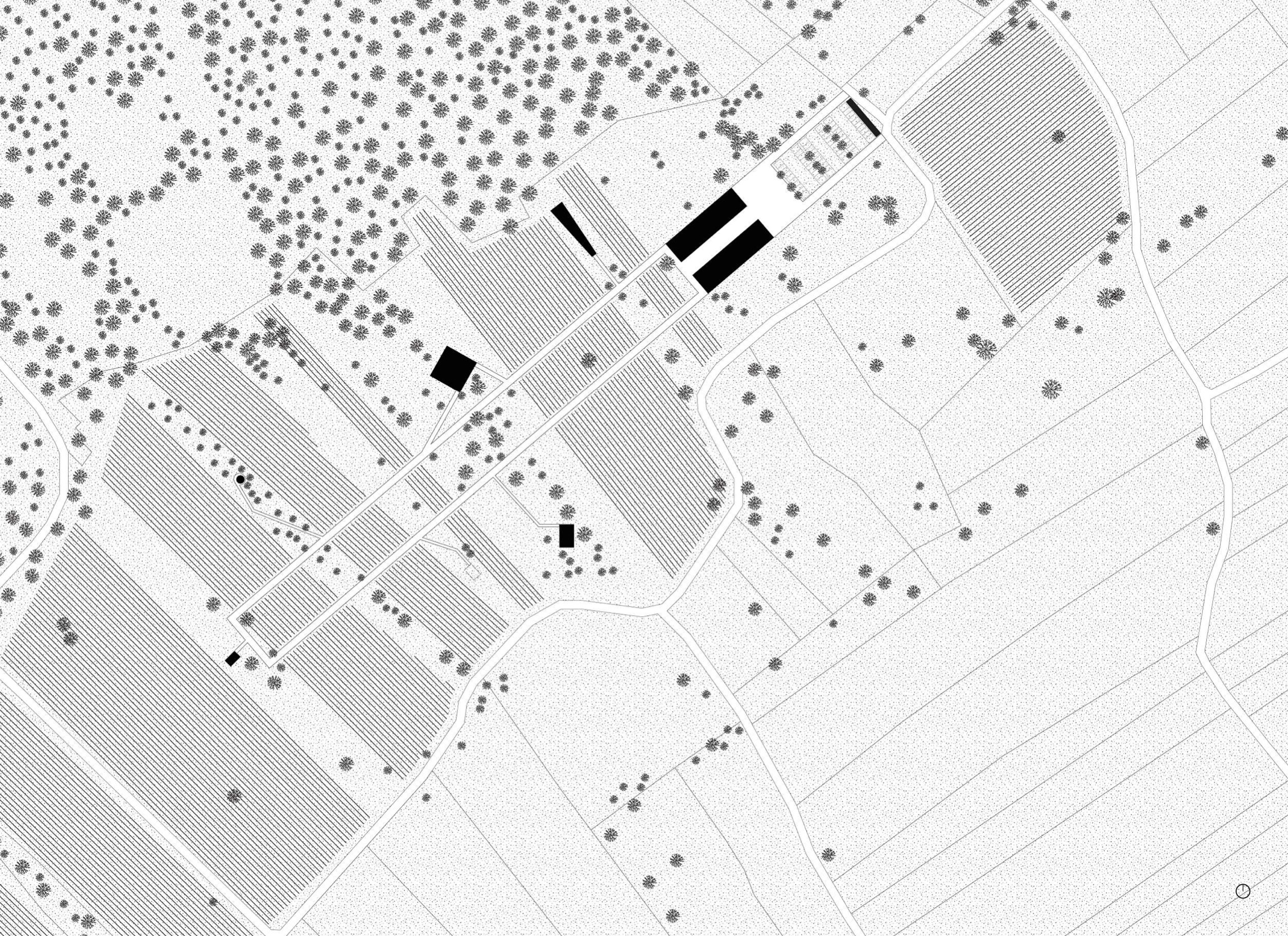Entwurf einer Erinnerungslandschaft
Julia Anna Gross

[De]
Asche zu Asche, Staub zu Staub. Das Schicksal, dem keiner entkommt. Wie können wir in Zukunft sicherstellen, dass wir sowohl respektvoll als auch nachhaltig mit dem Thema Bestattung umgehen?
Durch das Bevölkerungswachstum und das steigende Interesse nach einer alternativen, günstigen und nachhaltigen Methode, Menschen zu bestatten, rückt die Einäscherung als Alternative zur Erdbestattung weltweit zunehmend inden Fokus. Spannend dabei sind die möglichen Auswirkungen, die diese Entwicklungen mit sich bringen können. Zum einen ist die Einwirkung auf den Raum und die Gestaltung von Krematorien von Interesse, zum anderen kann untersucht werden, welche Möglichkeiten Architektur hat, um Themen wie Tod, Verabschiedung und Stille auszudrücken.
Ziel dieser Arbeit ist es, ein Krematorium zu entwerfen, das zwischen Leben und Tod vermittelt. Mit dem Konzept der räumliche Schwelle ließe sich sinnbildlich der Übergang vom Sein zum Nicht-Sein gestalterisch aufgreifen. Das architektonische Sichtbar-machen dieses letzten Aktes soll die Trauernden bei ihrer Verabschiedung begleiten.Die Verbindung zwischen gebauten und mentalen Übergängen herzustellen, ist das Ziel des Projektes.
Der städtebaulichen Kontextes nimmt einen zentralen Stellenwert ein. Hierbei geht es vordergründig um Fragen zur Standortpolitik, mögliche Verdrängungsprozesse und der Auseinandersetzung, inwiefern der Tod und die damitverbundenen Gebäude wieder mehr ins Bewusstsein der Menschen zurückgerufen werden können.
[En]
Ashes to Ashes dust to dust. The fate that no one can escape. How can we ensure in the future that we treat burial with respect and sustainability?
As a result of population growth and the growing interest in an alternative, cheap and sustainable method of burying people, cremation as an alternative to burial in the earth is increasingly becoming the focus of attention worldwide. What is exciting is the possible impact that these developments can have. On the one hand, the impact on the space and the design of crematoriums would be of interest, on the other hand, it could be examined what possibilities architecture has to express topics such as death, farewell and silence.
The aim of this work is to design a crematorium that mediates between life and death. With the concept of the spatial threshold, the transition from being to not-being could be taken up spatially. The architectural visualization of this last act should accompany the mourners when they say goodbye. The aim of the project is to create a connection between built and mental transitions.
The urban planning context is of central importance. The primary focus here is on questions of location policy, possible repression processes and the discussion of the extent to which people and the associated buildings can be recalled.
Ganze Arbeit im Volltext